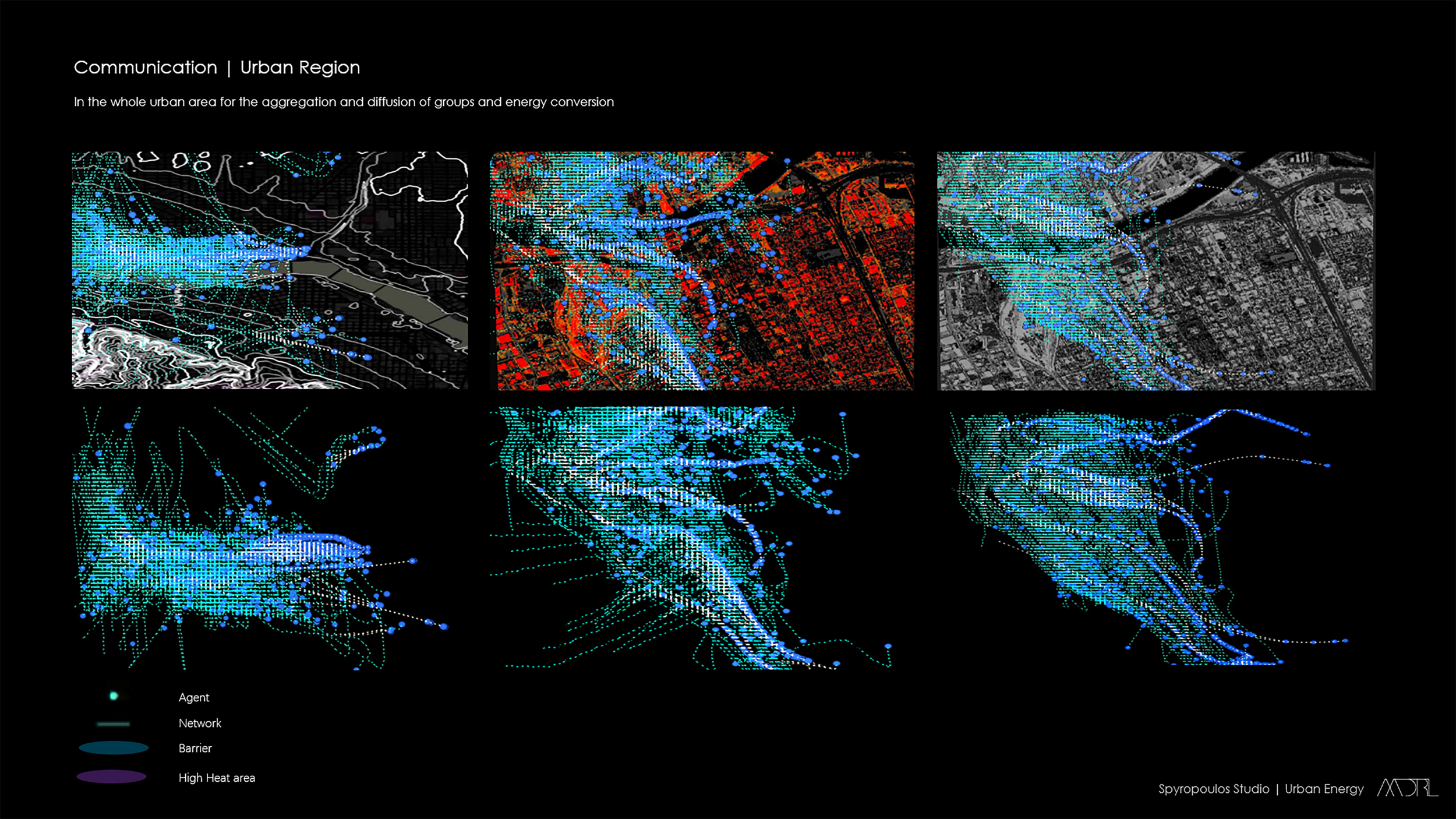URBAN ENERGY
Studio Theodore Spyropoulos
Tutors Mostafa El-Sayed, Apostolos Despotidis, Aleksandar Bursac
Team Huiying Xiao, Panagiota Tsaparikou, Yunpeng Chen
Fire is an element essential to sustain human life that exists around us in different forms. Due to increased human activity, densely populated urban areas are significantly warmer than their surrounding rural areas. In urban regions where many people coexist in a small space, the environment is largely built with high-rise structures to accommodate a growing need for living spaces. In metropolitan areas, the phenomenon of urban heat islands becomes increasingly severe as natural land cover is replaced by large amounts of structures, pavements and other surfaces which absorb and retain heat. This heat is unable to then dissipate in the environment, thus, accumulating in the urban centres.
Our project is based on the design of an energy management system, that is a multi-state, multi-material and multi-geometry system created to harvest, store and release energy in the form of heat and light. It visualises the space as an energy map with different layers and detects areas with increased heat concentration, which ultimately captures and saves before repurposing and releasing. The units are composed of stimuli-responsive materials that enable thermal conductivity and can absorb the excessive energy from building facades.
Throughout the day and night, the heat map of human activity serves as an index which our dynamic system analyses and translates into different forms of energy. In the daytime, the system addresses the issue of radiant heating and energy diffusion, whereas during the night, the units reassemble to create an illumination infrastructure in the urban space which brings people together and constructs different atmospheres in the city. The system enables the circulation of energy, while organising and redefining public space as well as the way humans interact within the urban context, by using the element of fire as heat and illumination.














